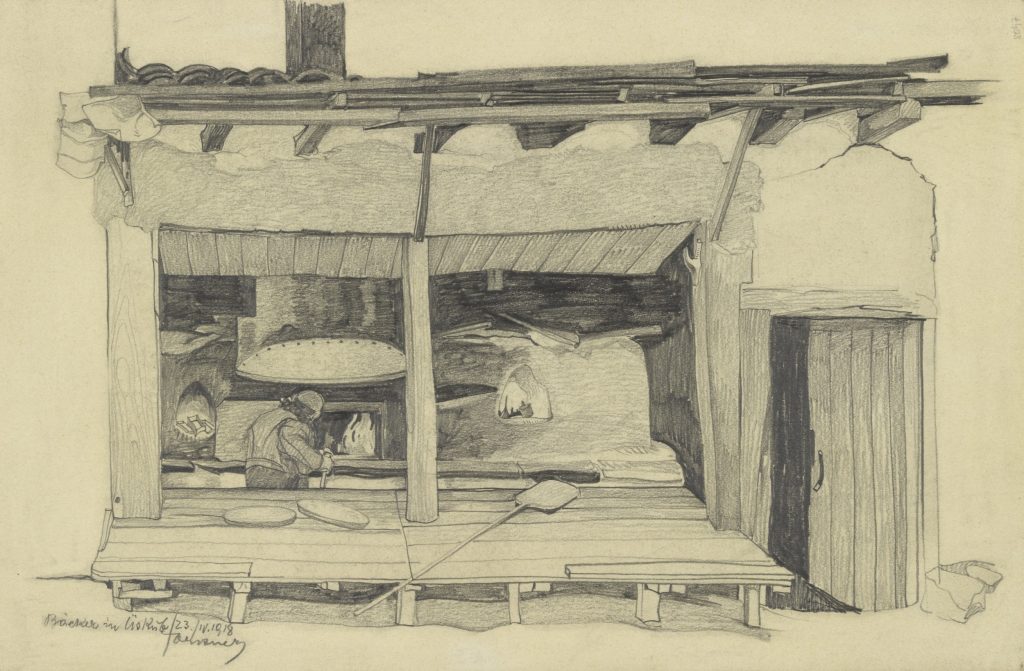Leopold Forstner (2 November 1878 in Bad Leonfelden, Upper Austria – 5 November 1936 in Stockerau) was an artist who was part of the Viennese Jugendstil movement, focusing particularly on the mosaic as a form.
He completed his primary education in Leonfelden, before completing his education in Linz. Through his uncle Anton Forstner he was able to be released from an apprenticeship in glass painting and mosaic installation in Innsbruck and instead studied at the University of Applied Arts in Vienna. There, he studied under Karl Karger and Koloman Moser. Moser would go on to mentor Forstner. After the end of his studies in Vienna, Forstner would go on to study at the Academy of Fine Arts in Munich, under Ludwig von Herterich.
Although his studies in Munich ran from 1902 to 1903, Forstner had begun to work as an artist, painter and illustrator from 1901. In 1906 he founded the “Wiener Mosaikwerkstätte”, and two years later he was given a trade license to produce glass mosaics. He presented work at the 1908 Wiener Kunstschau, organized by Gustav Klimt and Josef Hoffman. He also presented work at the Spring showings of the Hagenbund, a Viennese art collective.
Originally Forstner’s mosaics were in the traditional Venetian or Florentine technique and style, he became famous for his mixed media and tile mosaics, for example the Klimt frieze in the Palais Stoclet. As well as his own designs, Forstner collaborated with many important artists of the time, for example Klimt, Otto Wagner, Otto Schönthal and Emil Hoppe.
In 1912 he became a member of the Bund österreichischer Künstler, and with the architect Cesar Poppovits and the painter Alfred Basel, he founded the Wiener Friedhofskunst. That year, the success and popularity of his work enabled him to build his own glass kiln. In 1913 he became an associate member of the Society of Austrian Architects.
During the First World War, he was a Collection Officer in Albania and Macedonia. In Macedonia he was stationed in Ohrid, where he produced around 100 drawings. In 2013 a retrospective of his works including around 30 drawings were exhibited in Skopje. A collection of Macedonian drawings are in the Austrian Museum (“House in Prilep”, “House in Ochrida”, “Stock market in Uskub” , etc…)
Due to the poor economic conditions in Austria after the First World War, Forstner worked more as an all-round artist rather than focusing solely on mosaics. He worked on several War Memorials, as an architect and landscape designer and, from 1929-1936 as the art master at Hollabrunn Gymnasium.

